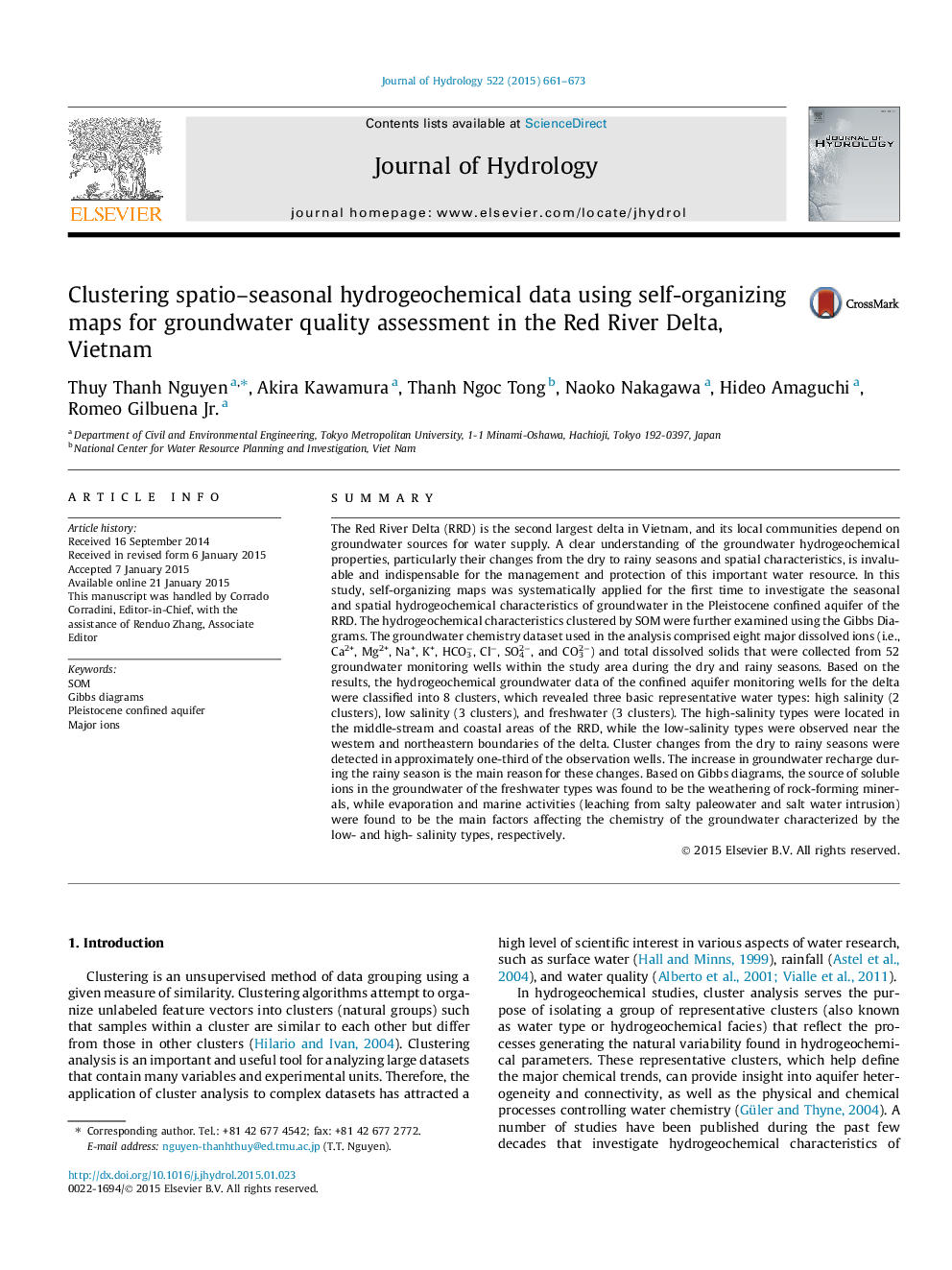| Article ID | Journal | Published Year | Pages | File Type |
|---|---|---|---|---|
| 6411378 | Journal of Hydrology | 2015 | 13 Pages |
â¢We investigate hydrochemical characteristics of groundwater in the Red River Delta.â¢Self-organizing maps and Gibbs diagrams were applied systematically in this study.â¢Seasonal changes in hydrogeochemical properties of the groundwater were detected.â¢The natural mechanisms controlling groundwater chemistry were examined.
SummaryThe Red River Delta (RRD) is the second largest delta in Vietnam, and its local communities depend on groundwater sources for water supply. A clear understanding of the groundwater hydrogeochemical properties, particularly their changes from the dry to rainy seasons and spatial characteristics, is invaluable and indispensable for the management and protection of this important water resource. In this study, self-organizing maps was systematically applied for the first time to investigate the seasonal and spatial hydrogeochemical characteristics of groundwater in the Pleistocene confined aquifer of the RRD. The hydrogeochemical characteristics clustered by SOM were further examined using the Gibbs Diagrams. The groundwater chemistry dataset used in the analysis comprised eight major dissolved ions (i.e., Ca2+, Mg2+, Na+, K+, HCO3â, Clâ, SO42â, and CO32â) and total dissolved solids that were collected from 52 groundwater monitoring wells within the study area during the dry and rainy seasons. Based on the results, the hydrogeochemical groundwater data of the confined aquifer monitoring wells for the delta were classified into 8 clusters, which revealed three basic representative water types: high salinity (2 clusters), low salinity (3 clusters), and freshwater (3 clusters). The high-salinity types were located in the middle-stream and coastal areas of the RRD, while the low-salinity types were observed near the western and northeastern boundaries of the delta. Cluster changes from the dry to rainy seasons were detected in approximately one-third of the observation wells. The increase in groundwater recharge during the rainy season is the main reason for these changes. Based on Gibbs diagrams, the source of soluble ions in the groundwater of the freshwater types was found to be the weathering of rock-forming minerals, while evaporation and marine activities (leaching from salty paleowater and salt water intrusion) were found to be the main factors affecting the chemistry of the groundwater characterized by the low- and high- salinity types, respectively.
